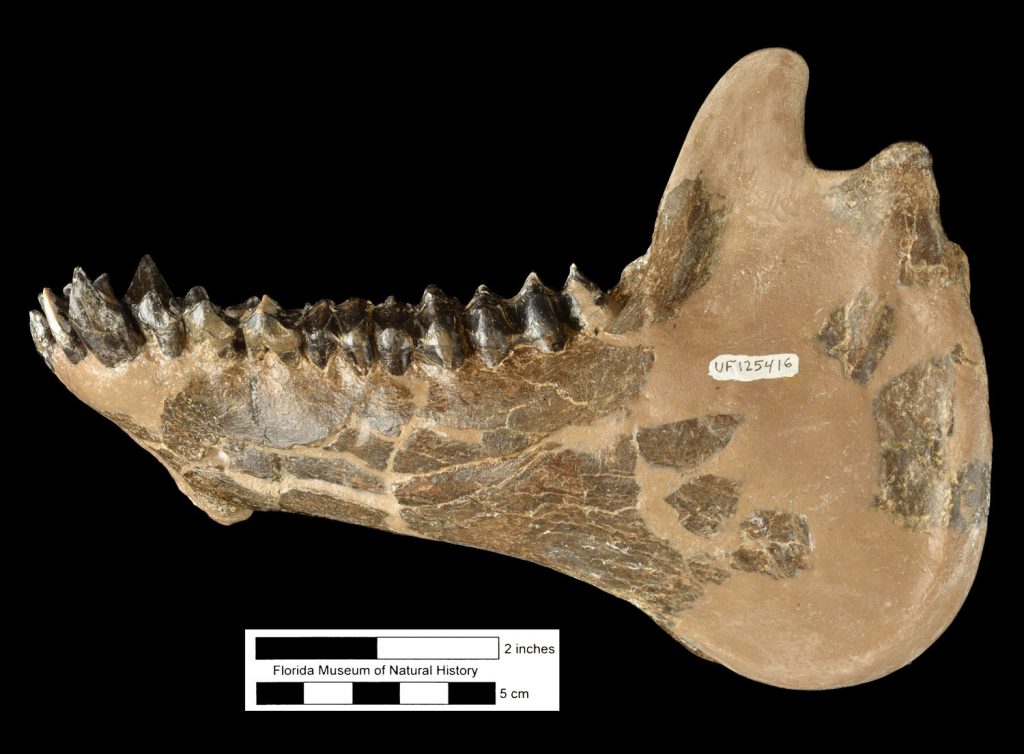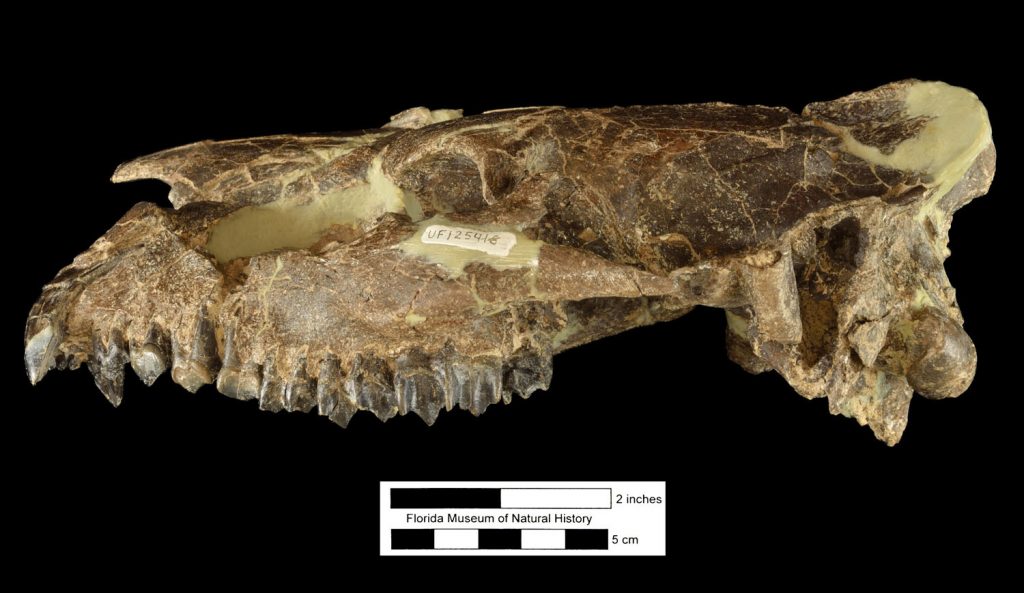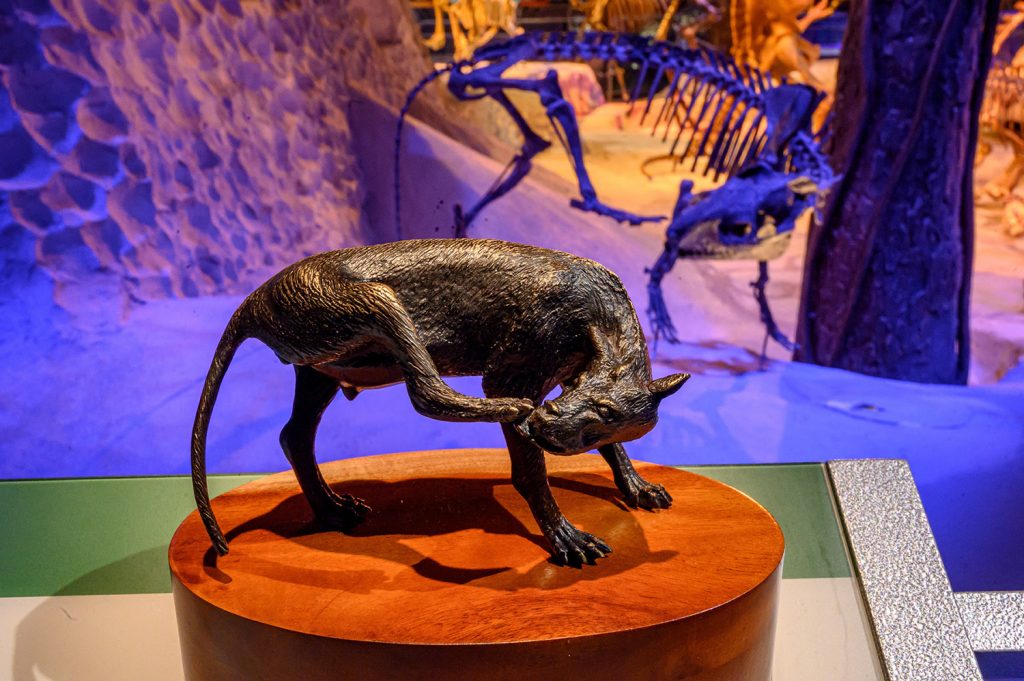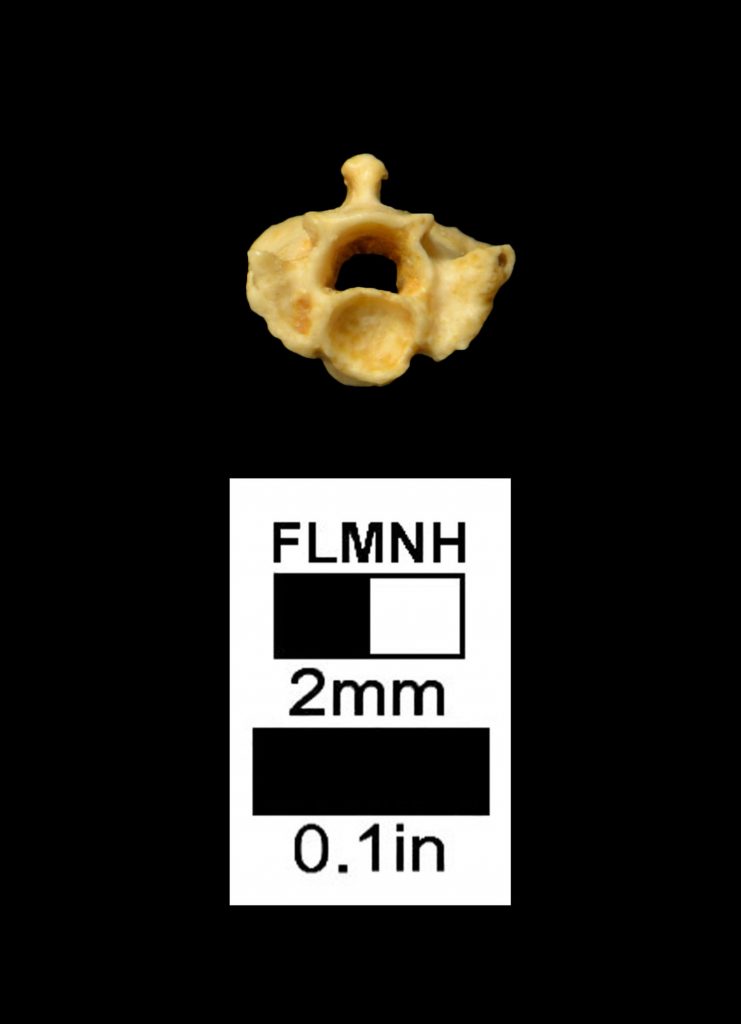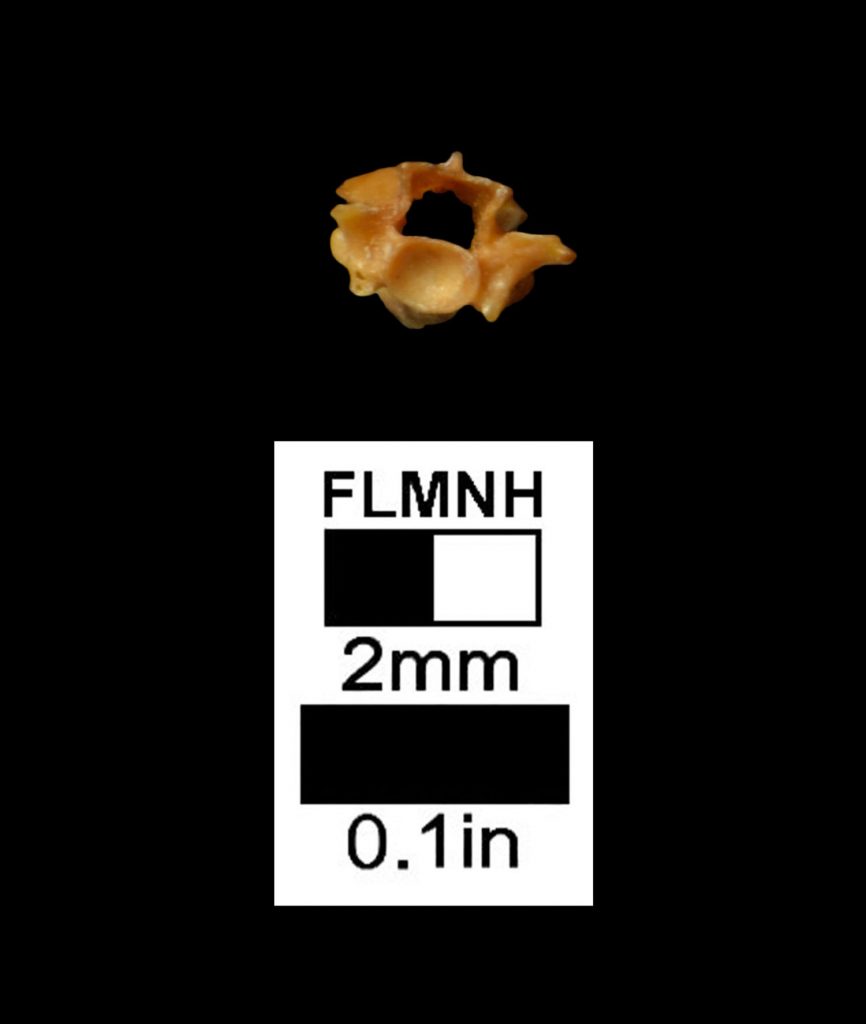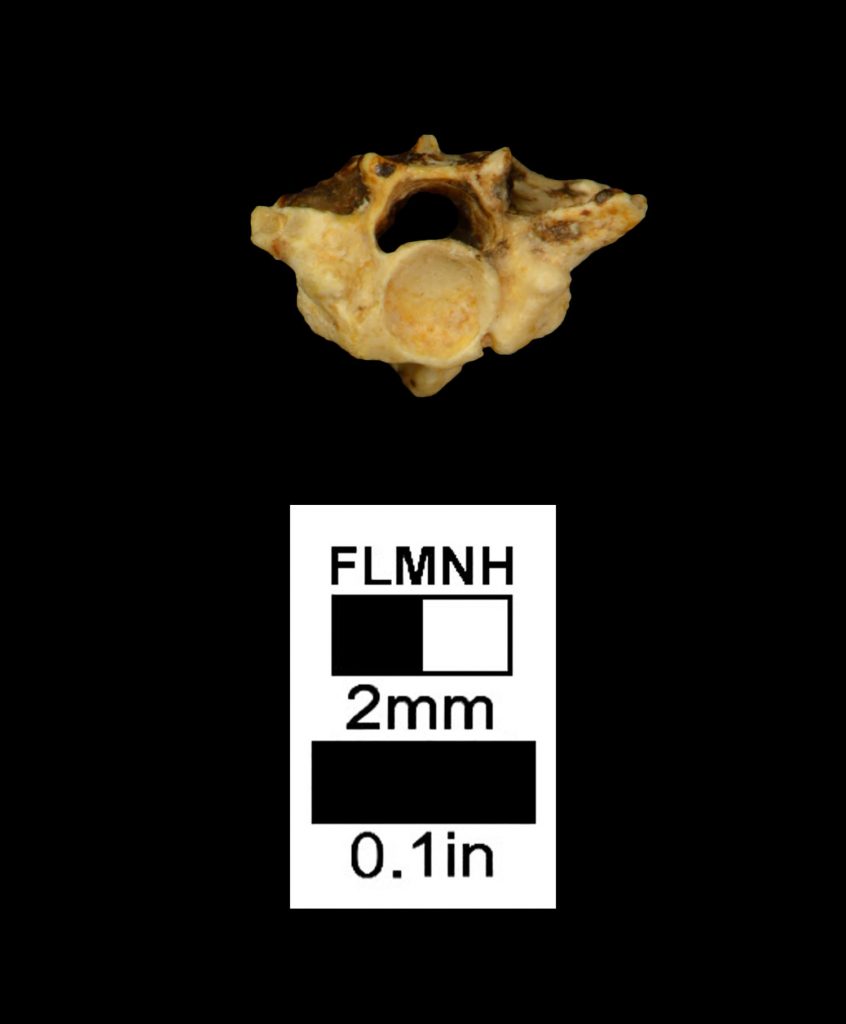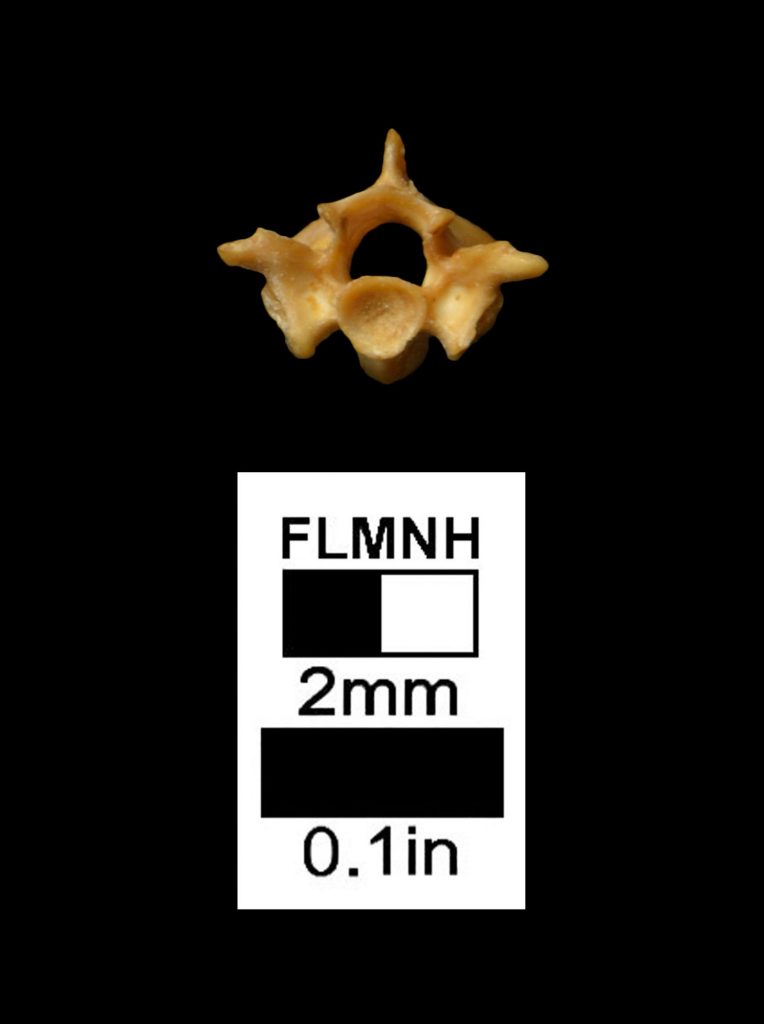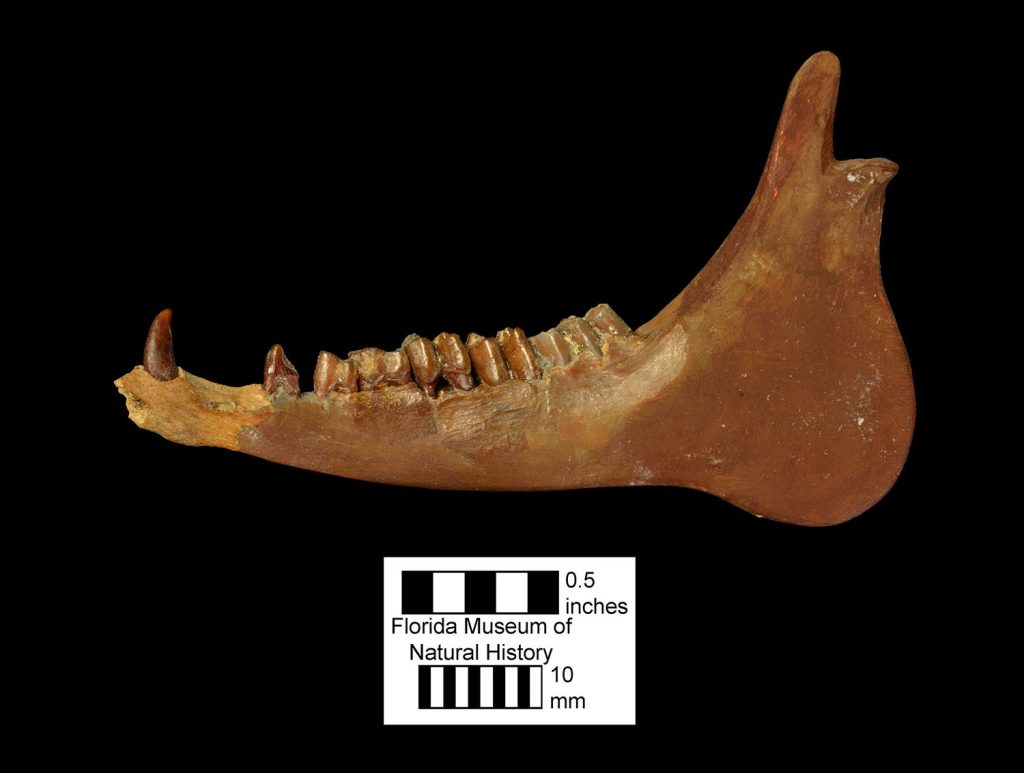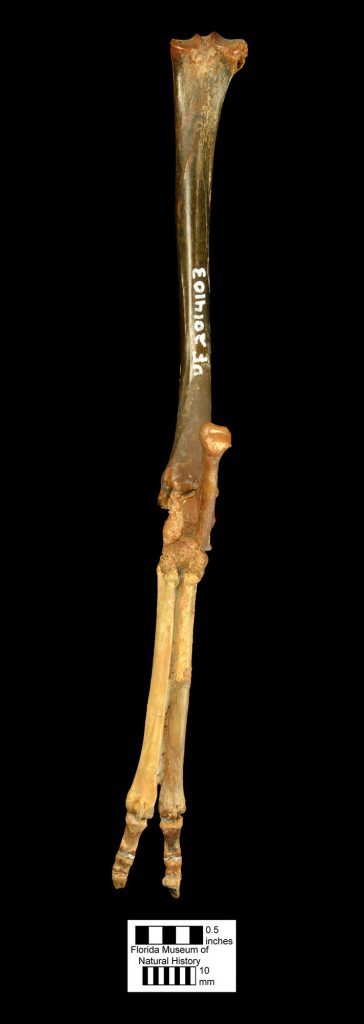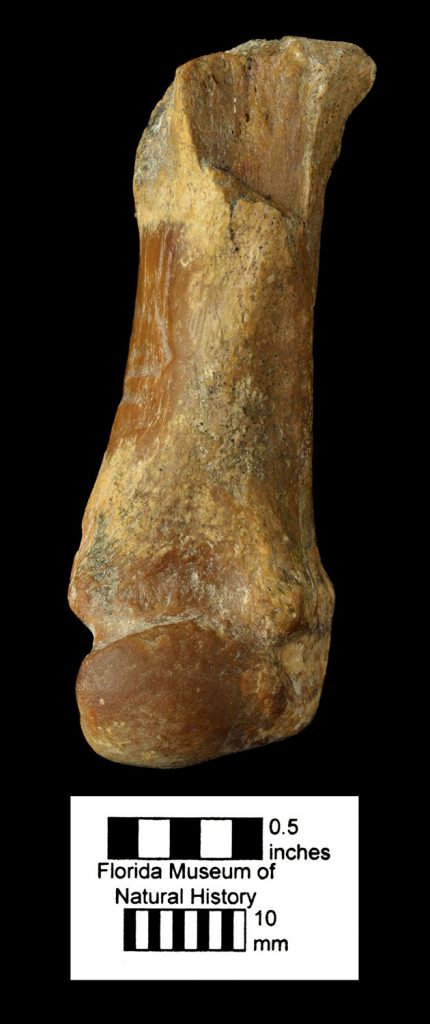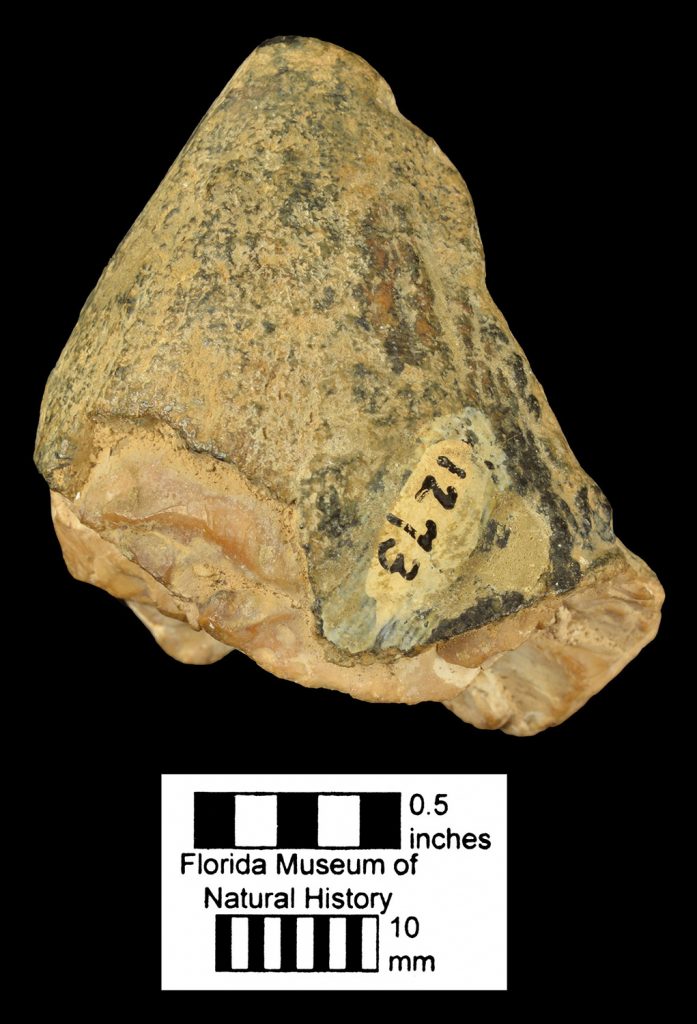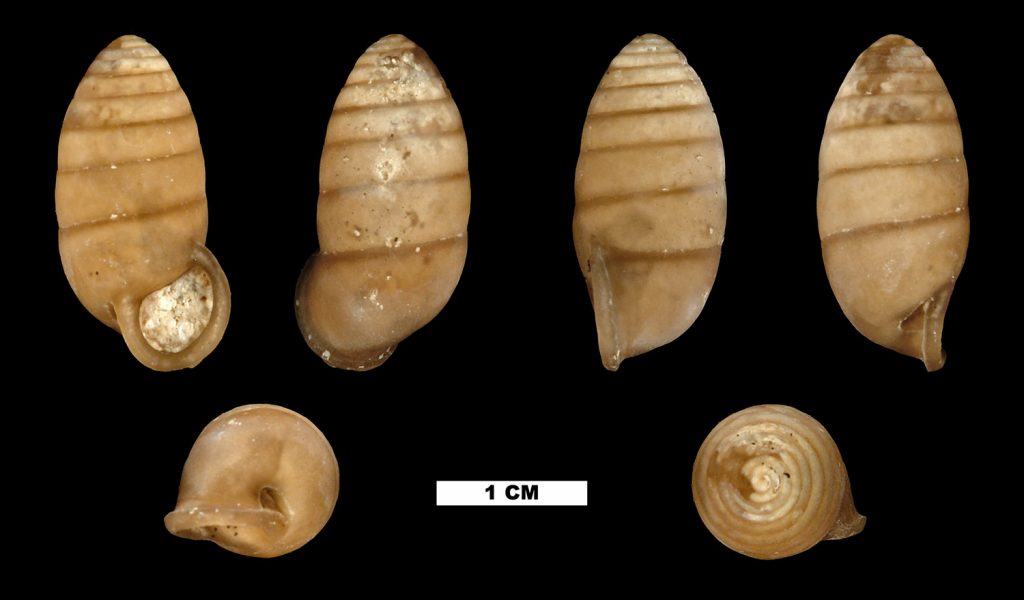Oligocene Epoch
34 million to 23 million years ago
During the previous epoch, Florida was under water, but the global climate cooled in the Oligocene. This caused sea levels to drop and a portion of northern Florida went from marine to terrestrial habitats! Many animals migrated to this new land, while a portion of our state was still under water and supported many marine creatures. Explore some of the terrestrial animals of Florida’s Oligocene:
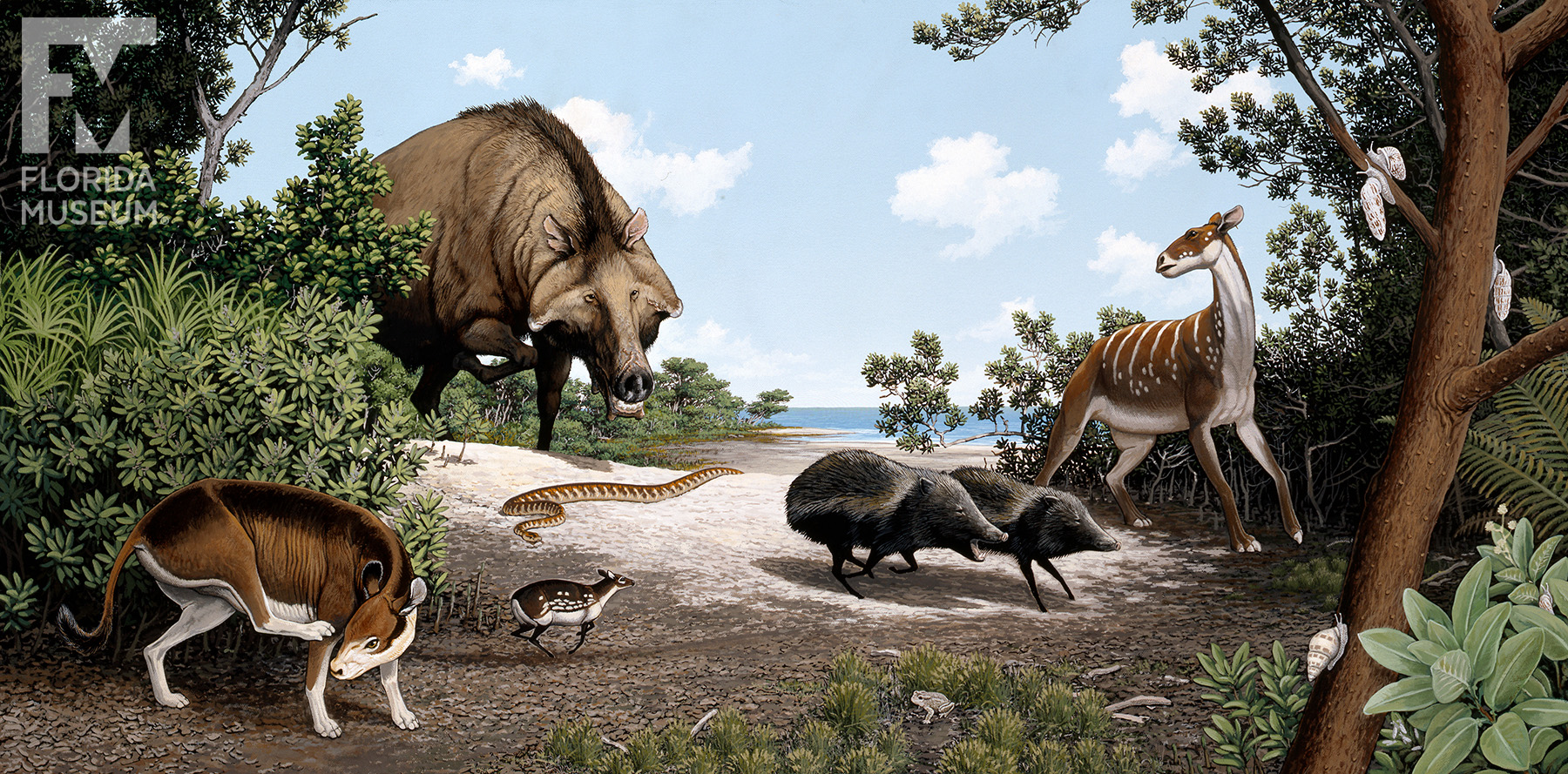
This painting was commissioned from artist Carl Buell for our Florida Fossils exhibit. Learn about the Oligocene animals represented:
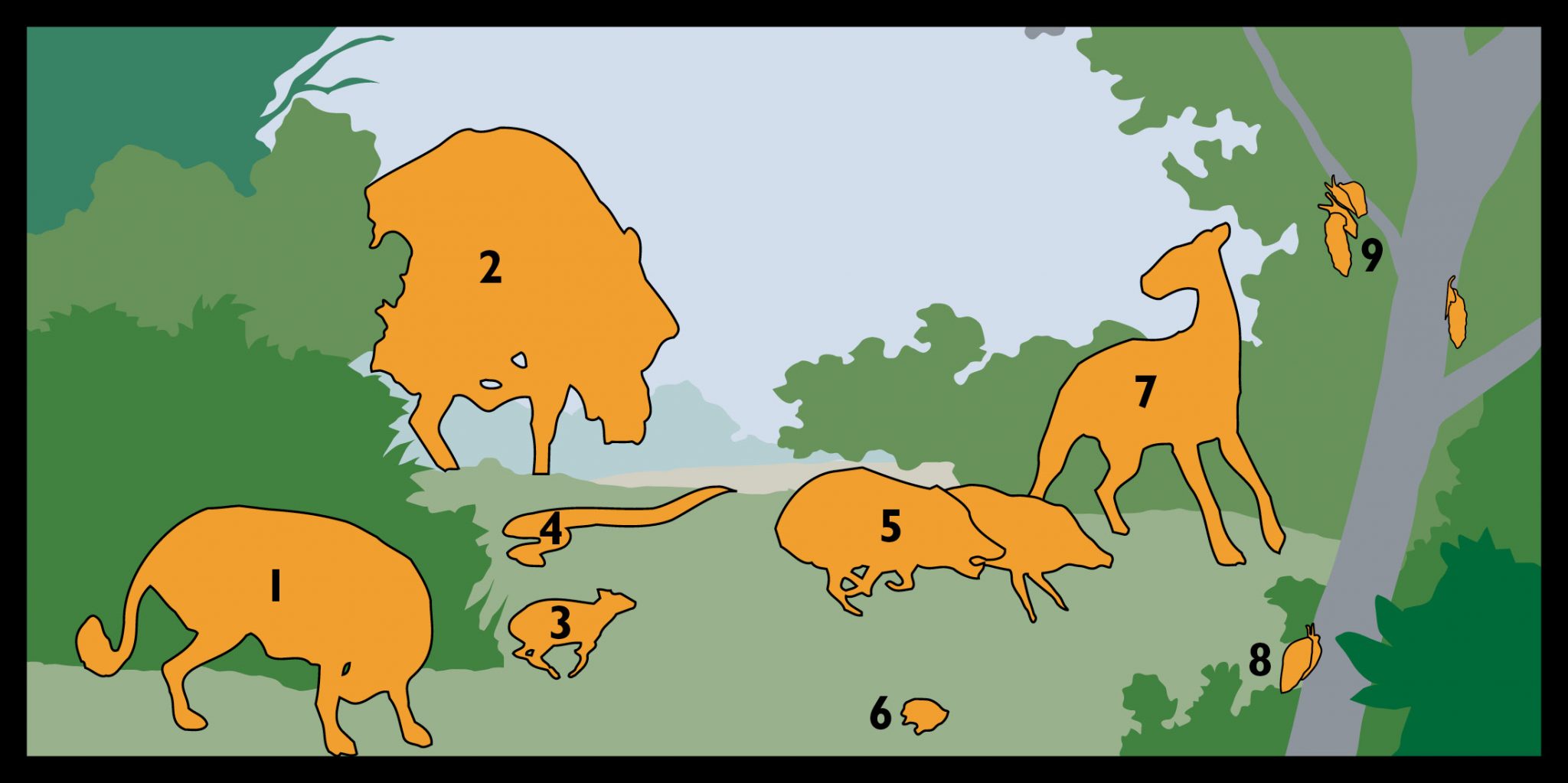
- Mesoreodon floridensis (Florida oreodont)
- Daeodon species (extinct giant “hog”)
- Nanotragulus loomisi (mouse deer)
- Unidentified boa
- Cynorca species (peccary)
- Bufo species (toad)
- Moropus oregonensis (dwarf chalicothere)
- Tocobaga americanus (American treesnail)
- Cerion anodonta (untoothed cerion)
Highlights
Oreodonts are an extinct group of mammals that were small- or medium-size with somewhat hog-like body structures with short faces, thick bodies and long tails. This Florida oreodont species (Mesoreodon floridensis) was an herbivore that browsed—ate leaves, twigs and fruits—and probably lived in small herds. There is a skeleton and a bronze sculpture in our exhibit, or read more about this oreodont
While the snake in this painting is unidentified to species, there are some interesting snake fossils in our collection from the Oligocene, like the species Floridaophis auffenbergi. A small fossil site was discovered while workers were making improvements on an I-75 overpass not far from our Museum. That discovery produced several species of snake vertebrae, among other interesting specimens. Read about the I-75 fossil site
These fossils, as well as the other species found, helped scientists better understand how this area of Florida was probably connected to the mainland while much of the state was still under water. From tiny bones of toads to specimens of Daeodon, a large, hog-like mammal, paleontologists can reconstruct an ecosystem to better understand what Florida’s terrestrial landscape looked like during this time of great change.
Explore more fossils
Note:Because our scientific knowledge is always expanding, some information like species names may have changed since the Florida Fossils exhibit was opened in 2004. The information on this page has been updated and may differ from the exhibit panel.
More
Florida Fossils: Evolution of Life and Land exhibit
Florida Vertebrate Fossils online resource
